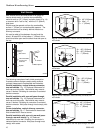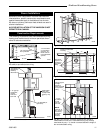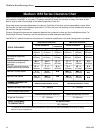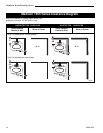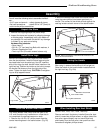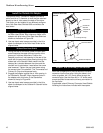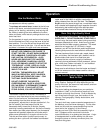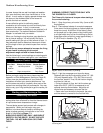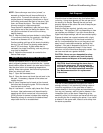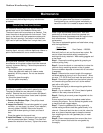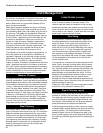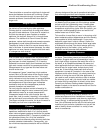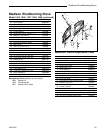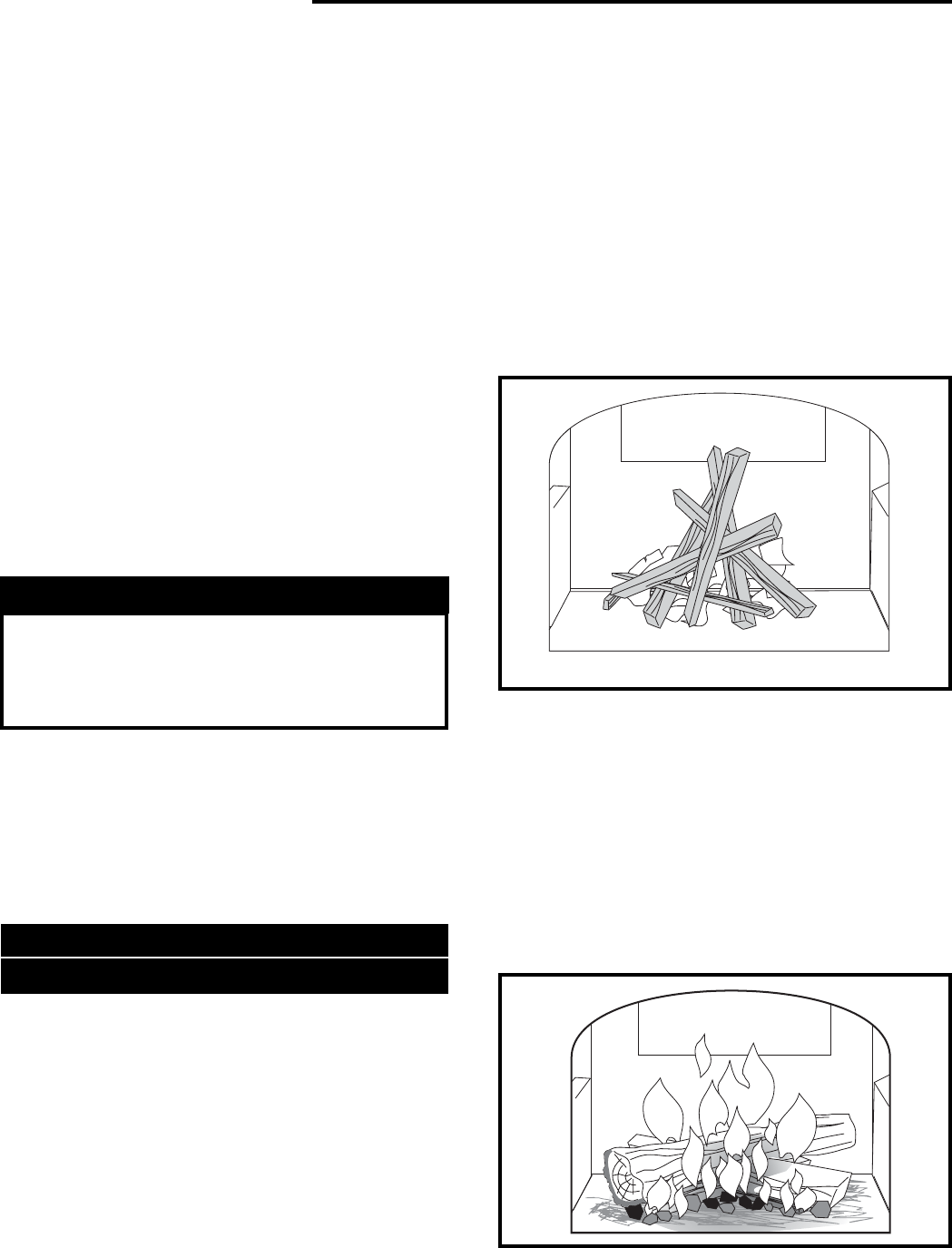
18
Madison Woodburning Stove
30001453
Fig. 27 Start a fire with small, dry kindling.
ST263
Fig. 28 Gradually add larger pieces of wood until all the wood
is burning well.
ST264
In newer homes that are well-insulated and weather-
tight, poor draft may result from insufficient air in the
house. In such cases, a slightly opened window near
the stove on the windward side of the house will
provide the fresh air needed.
A more effective option for delivering ample
combustion air to the stove is to duct air directly from
outdoors to the stove. In fact, in some areas,
provisions for outside combustion air are required in all
new construction. The optional Madison Outside Air
Adapter is available from your dealer.
When you first begin using the stove, pay attention to
the air control settings. You will quickly find that a
specific setting will give you a fixed amount of heat. It
may take some time to determine the amount of heat
and the length of burn you should expect from various
settings.
Do not for any reason attempt to increase the firing
of your heater by altering the air control
adjustment range outlined in these directions.
Use the following air control settings as a starting point
to help determine the best settings for your installation.
Madison Control Settings
Burn Rate Primary Air Control Shutter Position
High Left most position Fully Open
Medium Half Open
Low Right most position Fully Closed
Before you begin using the stove, please read the
Appendix on Draft Management, starting on Page 22,
to learn how the characteristics of your particular
installation will affect your stove's performance. You
and the stove are parts of a system; other parts of the
system have a strong effect on performance. You may
need to vary your firing technique to get the results you
desire.
Starting and Maintaining a Fire
Conditioning Your Stove
Cast iron is extremely strong, but it can be broken with
a sharp blow from a hammer or from the thermal shock
of rapid and extreme temperature change.
The cast plates expand and contract with changes in
temperature. When you first begin using your
Madison, minimize thermal stress by allowing the
plates to adjust gradually during three or four initial
break-in fires following Steps 1- 3.
BURN SOLID WOOD FUEL ONLY, AND BURN IT
DIRECTLY ON THE GRATE. DO NOT ELEVATE
THE FUEL. DO NOT BURN COAL OR OTHER
FUELS.
WARNING: OPERATE THIS STOVE ONLY WITH
THE DOORS FULLY CLOSED.
The Primary Air Inlet must be open when starting a
fire or when refueling.
Step 1. Open the primary air control fully. (Lever at left
most position)
Step 2. Place several sheets of crumpled newspaper
in the stove. Avoid using glossy or colored paper, as
these burn poorly. At the front of the firebox, place
on the paper six or eight pieces of dry kindling split
to a finger-width size, and on the kindling lay two or
three larger sticks of split dry wood approximately 1-
2" (25-51mm) in diameter. (Fig. 27)
Step 3. Light the newspaper and close the doors.
Gradually build up the fire by adding a few 3-5" (80-
120 mm) diameter splits. (Fig. 28) If this is one of
the first few "break-in" fires, let the fire burn brightly,
and then let it die out.
• During the break-in fires, don't let the stove get
hotter than 500°F. (260°C) as measured on an
optional stove-top thermometer. Adjust the air
control lever as necessary to control the fire.
• Some odor from the stove’s hot metal, the paint,
and the cement is normal for the first few fires.



